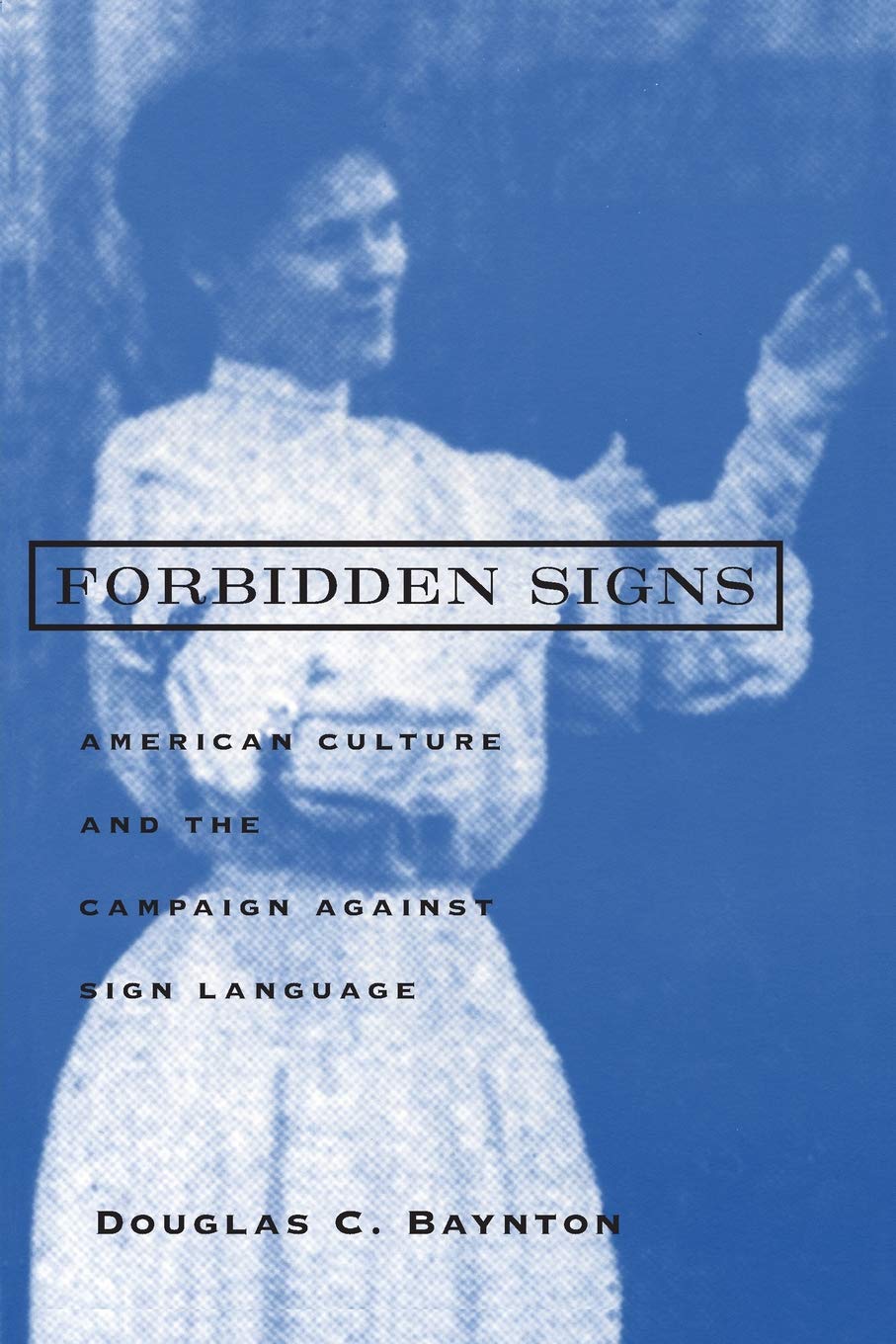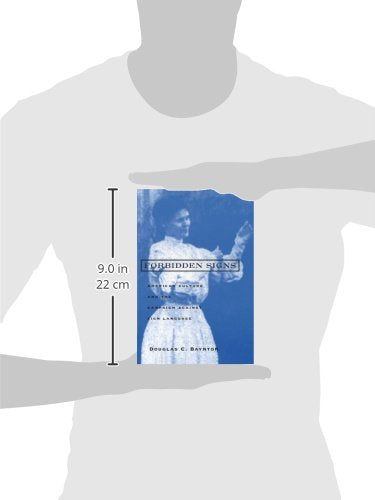
Title



Forbidden Signs: American Culture And The Campaign Against Sign Language,Used
Delivery time: 8-12 business days (International)
Forbidden Signs Explores American Culture From The Midnineteenth Century To 1920 Through The Lens Of One Striking Episode: The Campaign Led By Alexander Graham Bell And Other Prominent Americans To Suppress The Use Of Sign Language Among Deaf People.The Ensuing Debate Over Sign Language Invoked Such Fundamental Questions As What Distinguished Americans From Nonamericans, Civilized People From 'Savages,' Humans From Animals, Men From Women, The Natural From The Unnatural, And The Normal From The Abnormal. An Advocate Of The Return To Sign Language, Baynton Found That Although The Grounds Of The Debate Have Shifted, Educators Still Base Decisions On Many Of The Same Metaphors And Images That Led To The Misguided Efforts To Eradicate Sign Language.'Baynton'S Brilliant And Detailed History, Forbidden Signs, Reminds Us That Debates Over The Use Of Dialects Or Languages Are Really The Linguistic Tip Of A Mostly Submerged Argument About Power, Social Control, Nationalism, Who Has The Right To Speak And Who Has The Right To Control Modes Of Speech.'Lennard J. Davis, The Nation'Forbidden Signs Is Replete With Good Things.'Hugh Kenner, New York Times Book Review
By changing our most important processes and
products, we have already made a big leap forward. This ranges from the
increased use of more sustainable fibers to the use of more
environmentally friendly printing processes to the development of
efficient waste management in our value chain.
⚠️ WARNING (California Proposition 65):
This product may contain chemicals known to the State of California to cause cancer, birth defects, or other reproductive harm.
For more information, please visit www.P65Warnings.ca.gov.
Shipping & Returns
Shipping
We ship your order within 2–3 business days for USA deliveries and 5–8 business days for international shipments. Once your package has been dispatched from our warehouse, you'll receive an email confirmation with a tracking number, allowing you to track the status of your delivery.
Returns
To facilitate a smooth return process, a Return Authorization (RA) Number is required for all returns. Returns without a valid RA number will be declined and may incur additional fees. You can request an RA number within 15 days of the original delivery date. For more details, please refer to our Return & Refund Policy page.
Shipping & Returns
Shipping
We ship your order within 2–3 business days for USA deliveries and 5–8 business days for international shipments. Once your package has been dispatched from our warehouse, you'll receive an email confirmation with a tracking number, allowing you to track the status of your delivery.
Returns
To facilitate a smooth return process, a Return Authorization (RA) Number is required for all returns. Returns without a valid RA number will be declined and may incur additional fees. You can request an RA number within 15 days of the original delivery date. For more details, please refer to our Return & Refund Policy page.
Warranty
We provide a 2-year limited warranty, from the date of purchase for all our products.
If you believe you have received a defective product, or are experiencing any problems with your product, please contact us.
This warranty strictly does not cover damages that arose from negligence, misuse, wear and tear, or not in accordance with product instructions (dropping the product, etc.).
Warranty
We provide a 2-year limited warranty, from the date of purchase for all our products.
If you believe you have received a defective product, or are experiencing any problems with your product, please contact us.
This warranty strictly does not cover damages that arose from negligence, misuse, wear and tear, or not in accordance with product instructions (dropping the product, etc.).
Secure Payment
Your payment information is processed securely. We do not store credit card details nor have access to your credit card information.
We accept payments with :
Visa, MasterCard, American Express, Paypal, Shopify Payments, Shop Pay and more.
Secure Payment
Your payment information is processed securely. We do not store credit card details nor have access to your credit card information.
We accept payments with :
Visa, MasterCard, American Express, Paypal, Shopify Payments, Shop Pay and more.
Related Products
You may also like
Frequently Asked Questions
- Q: What is the main theme of 'Forbidden Signs'? A: 'Forbidden Signs' explores the historical campaign against sign language in America, focusing on cultural debates surrounding language, power, and identity from the mid-nineteenth century to 1920.
- Q: Who is the author of 'Forbidden Signs'? A: The author of 'Forbidden Signs' is Douglas C. Baynton, a noted scholar in the field of American culture and deaf studies.
- Q: When was 'Forbidden Signs' published? A: 'Forbidden Signs' was published on June 22, 1998.
- Q: What is the format of 'Forbidden Signs'? A: 'Forbidden Signs' is available in paperback format, making it accessible for readers who prefer physical books.
- Q: How many pages does 'Forbidden Signs' have? A: 'Forbidden Signs' contains 235 pages, providing a comprehensive exploration of its subject matter.
- Q: What are some key topics discussed in 'Forbidden Signs'? A: Key topics include the suppression of sign language, cultural identity, and the societal implications of language use and education for the deaf community.
- Q: Is 'Forbidden Signs' suitable for academic study? A: Yes, 'Forbidden Signs' is suitable for academic study, particularly in fields such as linguistics, cultural studies, and disability studies.
- Q: What is the significance of the debates over sign language mentioned in the book? A: The debates over sign language reflect broader issues of power dynamics, social control, and the rights of marginalized communities to express their identities.
- Q: Does 'Forbidden Signs' include any historical context? A: 'Forbidden Signs' provides historical context by examining the cultural landscape of America during the mid-nineteenth century through 1920, focusing on the campaign against sign language.
- Q: Are there any reviews or accolades for 'Forbidden Signs'? A: 'Forbidden Signs' has received positive reviews, with notable praise from sources such as The Nation and the New York Times Book Review for its detailed historical analysis.
